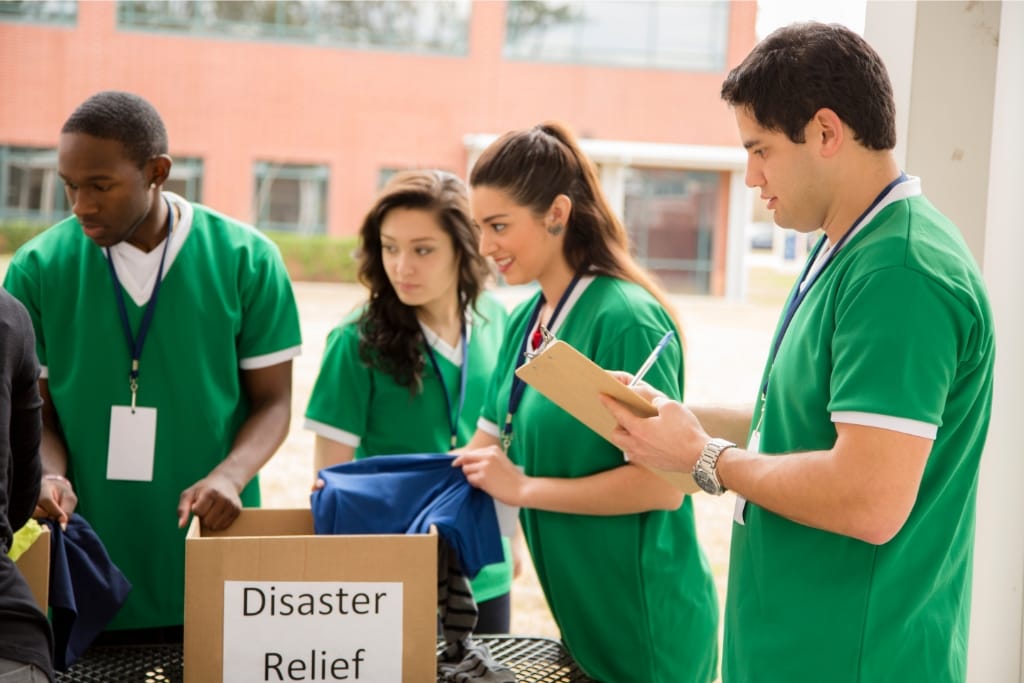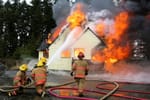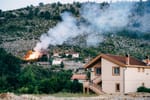In the face of devastating wildfires, communities often grapple with immense loss and hardship.
This guide aims to provide a comprehensive framework for individuals and groups looking to make a meaningful impact in the lives of those affected.
By outlining actionable steps to assess immediate needs, provide financial assistance, and support long-term recovery, we hope to encourage collective efforts to restore hope and resilience among wildfire victims.
Every contribution, no matter how small, can play a vital role in helping communities heal and rebuild after such catastrophic events.
This guide serves as a vital resource for individuals and organizations seeking to assist those impacted by wildfires.
Its purpose is to offer clear, actionable steps that facilitate a coordinated response to the immediate and long-term needs of wildfire victims.
By breaking down the support process into manageable sections—assessing immediate needs, providing financial assistance, and fostering recovery—the guide empowers readers to take meaningful action in their communities.
It aims to promote awareness, inspire collaboration, and encourage a spirit of compassion to ensure that affected individuals receive the help they desperately need during one of their most challenging times.
Providing support to wildfire victims is crucial for several reasons. Firstly, wildfires can lead to devastating losses—homes, livelihoods, and even lives—leaving individuals and families in dire situations.
Offering assistance not only helps to meet their immediate needs for shelter, food, and medical care, but it also aids in their emotional recovery by demonstrating that they are not alone in their struggle.
Community support fosters a sense of solidarity and resilience, allowing affected individuals to rebuild their lives with the knowledge that they are backed by caring neighbors and friends.
Finally, addressing the needs of wildfire victims contributes to the overall strength and recovery of the community as a whole, ensuring that it can emerge from such crises stronger and more united than ever before.
Step 1: Assess Immediate Needs
In the aftermath of a wildfire, the first and most critical action is to assess the immediate needs of the affected individuals and families.
This initial step lays the foundation for effective relief efforts by ensuring that resources are allocated where they are most needed.
Understanding the specific challenges faced by victims, such as the need for shelter, food, and medical assistance, is essential for providing timely and relevant support.
By engaging with local relief organizations and directly interacting with those impacted, volunteers and aid providers can create a comprehensive overview of immediate necessities, enabling a more targeted and efficient response.
This phase not only prioritizes the urgent requirements of wildfire victims but also fosters a sense of community connection and empathy during an incredibly challenging time.
Connect With Local Relief Organizations
Identify And Reach Out To Local Charities
Connecting with local charities and organizations involved in disaster relief is a pivotal step in assessing immediate needs following a wildfire.
These organizations often have firsthand knowledge of the affected communities and the specific challenges residents are facing.
By identifying and reaching out to these charities, individuals can gather essential information on the immediate needs of victims and understand the resources already available in the area.
Collaboration with local relief agencies not only streamlines the support process but also ensures that efforts are well-coordinated, avoiding redundancy and maximizing the impact of assistance provided.
Partnering with established organizations can enhance credibility and trust within the community, helping to expedite relief efforts and foster a sense of hope among those affected.
Gather Information On Their Specific Needs And Priorities
To effectively gather information on the specific needs and priorities of wildfire victims, it is essential to engage directly with those affected as well as local support networks.
This can be achieved through surveys, community meetings, and one-on-one conversations, which allow individuals to express their immediate challenges and priorities in their own words.
By listening attentively to their experiences and needs, volunteers and aid organizations can develop a clearer understanding of what support will have the most significant impact.
It is crucial to consider not only the basic needs for shelter, food, and medical care but also emotional and mental health support, as victims navigate the trauma and stress associated with such disasters.
Creating open lines of communication fosters trust and ensures that the assistance provided is relevant, timely, and truly beneficial to the community's recovery efforts.
Conduct A Needs Assessment
Engage With Affected Individuals To Understand Their Immediate Needs
Engaging with affected individuals to understand their immediate necessities is a vital part of the recovery process following a wildfire.
This direct interaction allows volunteers and relief providers to gain valuable insights into individual circumstances, helping to identify urgent needs related to shelter, food, and medical care.
Personal conversations can reveal specific situations that may not be evident through surveys or reports, enabling a more nuanced and responsive approach to assistance.
By prioritizing empathetic communication and ensuring that victims feel heard, aid providers can better tailor their support efforts to address the most pressing requirements—such as temporary housing arrangements, access to nutritious meals, and prompt medical attention for injuries or health concerns.
This collaborative approach promotes a sense of dignity and respect for those affected, fostering resilience and hope as they begin to navigate the challenges ahead.
Create A List Of Essential Supplies Required For Short-Term Recovery
Creating a list of essential supplies required for short-term recovery is a crucial step in supporting wildfire victims during their immediate transition to safety and stability.
This list should encompass a range of items that address basic needs, including non-perishable food, clean water, clothing, personal hygiene products, and first aid supplies.
Considering the emotional well-being of those affected, items such as blankets, toiletries, and activity kits for children can provide comfort during a challenging time.
Collaborating with local shelters and relief organizations can help to refine this list based on specific community needs and available resources.
By having a clear inventory of necessary supplies, volunteers and aid workers can efficiently distribute assistance, ensuring that individuals and families have access to the essentials they require for their short-term recovery process.
Organize A Community Relief Effort
Mobilize Volunteers To Assist In Providing Resources And Support
Mobilizing volunteers to assist in providing resources and support is essential for an effective community relief effort following a wildfire.
Volunteers play a critical role in bridging the gap between immediate needs and available resources, helping to distribute supplies, provide transportation, and offer emotional support to affected individuals.
To successfully mobilize these volunteers, it is important to create organized outreach campaigns that communicate the specific needs of the community and outline how individuals can contribute their time and skills.
Training sessions can also be implemented to ensure that volunteers are well-prepared for their roles, whether it be in coordinating logistics, managing supply distribution, or providing support services.
Cultivating a strong sense of teamwork and commitment among volunteers fosters a shared mission of compassion and advocacy, allowing the community to come together in a time of crisis and effectively support those impacted by disaster.
Set Up Collection Points For Donations
Setting up collection points for donations and supplies in the community is a vital action that facilitates the gathering of essential resources for wildfire victims.
These designated locations should be easily accessible and well-publicized, encouraging community members to contribute food, clothing, hygiene products, and other necessary supplies.
Collaborating with local businesses, schools, and community centers can enhance the visibility and effectiveness of these collection efforts.
It is also important to have clear guidelines on what items are needed, as well as a system for sorting and managing the donations.
By creating a welcoming environment at these collection points, volunteers can engage with donors, expressing gratitude and fostering a spirit of solidarity among community members.
This collective effort not only aids those affected but also strengthens community bonds during a time of adversity.
Step 2: Provide Financial Assistance
Providing financial assistance is a critical component of the recovery process for individuals affected by wildfires.
While physical resources such as food and clothing are essential for immediate relief, financial support empowers victims to make choices that best meet their specific needs, whether it be for temporary housing, medical care, or other unforeseen expenses.
This step not only helps individuals regain a sense of control in their lives but also aids in the rebuilding of their communities.
Coordinating financial assistance requires careful planning and community collaboration to ensure that funds are distributed effectively and equitably, addressing the varying needs of the affected population.
By prioritizing financial aid, relief efforts can significantly enhance the overall recovery experience, facilitating both individual and community resilience.
Set Up A Fundraising Campaign
Launch A Dedicated Fundraiser Using Platforms Like GoFundMe
Launching a dedicated fundraiser using platforms like GoFundMe can be an effective way to raise financial support for those impacted by wildfires.
These online fundraising platforms allow individuals and organizations to create campaigns that share personal stories, photos, and specific financial goals, making it easy for supporters to understand the immediate needs of the community.
Engaging with social media and encouraging community members to spread the word about the fundraiser can significantly increase its reach and donations.
By constantly updating donors on the progress of the fundraising goal and the impact of their contributions, organizers can cultivate a sense of transparency and trust.
This collaborative effort not only raises necessary funds but also fosters solidarity among supporters, uniting them in a common cause to assist those who have been affected by the disaster.
Promote Campaigns On Social Media To Reach A Larger Audience
Promoting campaigns on social media is essential for reaching a larger audience and maximizing the impact of fundraising efforts for wildfire victims.
Utilizing platforms such as Facebook, Twitter, and Instagram allows organizers to share campaign details, highlight the personal stories of those affected, and provide updates on fundraising progress.
Engaging visuals, compelling narratives, and hashtags can enhance visibility and drive engagement, encouraging followers to share the campaign with their networks.
Regular posts and stories not only maintain momentum but also keep the community informed about how funds will be utilized and the ongoing needs of those impacted.
By tapping into the power of social media, relief efforts can galvanize support, mobilize resources, and create a wider network of solidarity that extends beyond the immediate community.
Collaborate With Local Businesses
Partner With Local Businesses To Host Events Or Donate A Portion Of Sales
Partnering with local businesses to host events or donate a portion of sales can significantly amplify fundraising efforts for wildfire relief.
By collaborating with restaurants, shops, and service providers, communities can create engaging events such as benefit dinners, fun runs, or charity auctions that not only raise funds but also foster community spirit.
Local businesses can contribute by offering a percentage of their sales on designated days or by providing goods and services for these events.
Promoting these initiatives through various channels helps inform the public and encourages participation, while also showcasing the business's commitment to supporting those in need.
Such partnerships not only generate vital financial resources but also strengthen ties within the community, as residents rally together to support local efforts during challenging times.
Seek Sponsorship For Fundraising Initiatives To Increase Their Impact
Seeking sponsorship for fundraising initiatives is a strategic way to enhance the impact of efforts aimed at aiding wildfire victims.
By approaching local businesses, corporations, and community leaders, organizers can secure financial backing and resources that significantly amplify the reach and effectiveness of their campaigns.
Sponsors may provide monetary contributions, in-kind donations, or marketing support, which can help cover event costs or boost publicity.
By highlighting the mutual benefits of collaboration—such as corporate social responsibility and community goodwill—organizations can create win-win partnerships that attract support.
Featuring sponsors in promotional materials and events not only acknowledges their contribution but also encourages other businesses to get involved, creating a ripple effect of support throughout the community.
Securing sponsorship elevates the fundraising initiative, providing greater financial resources and fostering a community-centric approach to recovery efforts.
Distribute Financial Aid Directly
Ensure Funds Are Available For Direct Support To Victims
Ensuring that funds are available for direct support to victims during the recovery from wildfires is critical for addressing their urgent needs.
Financial aid can be allocated specifically for rent, utility bills, and essential recovery expenses, enabling individuals and families to regain stability in their lives.
By streamlining the application process and making funds accessible quickly, aid organizations can alleviate some of the immediate financial burdens faced by those affected.
Transparency in how funds are distributed and the impact on recipients further encourages community trust and cooperation.
Direct support not only helps survivors meet their basic living expenses but also empowers them to focus on longer-term recovery and rebuilding efforts, promoting resilience and hope for a brighter future.
Provide Information On How Beneficiaries Can Access These Funds
Providing clear information on how beneficiaries can access funds is essential for ensuring that those affected by wildfires receive the support they need promptly.
Organizations should create straightforward guidelines outlining eligibility criteria, application processes, and necessary documentation to facilitate access.
This information can be disseminated through various channels, such as community meetings, social media platforms, and local news outlets, to reach a wide audience.
Setting up a dedicated helpline or online portal can assist individuals with queries and guidance on applying for aid.
By making this information readily available and easy to understand, organizations can empower victims to navigate the recovery process effectively and enhance their chances of receiving the crucial financial assistance needed to rebuild their lives.
Step 3: Support Long-term Recovery
Supporting long-term recovery is a vital step in helping communities rebuild and restore stability after the devastation of wildfires.
While immediate relief efforts focus on addressing urgent needs, a sustainable recovery plan must be established to tackle the ongoing challenges faced by affected individuals and families.
This phase involves not only financial assistance but also access to resources such as mental health support, housing solutions, and vocational training.
By fostering resilience and equipping survivors with the necessary tools to thrive, communities can pave the way for a brighter future.
Integration of local stakeholders, government agencies, and non-profit organizations is crucial in ensuring that recovery initiatives are comprehensive, inclusive, and tailored to the specific needs of those impacted by the disaster.
Develop A Recovery Plan
Collaborate With Local Agencies To Design Sustainable Recovery Strategies
Collaborating with local agencies to design sustainable recovery strategies is essential for creating a cohesive response to the complex challenges faced by wildfire-affected communities.
By engaging government entities, non-profits, and community organizations, stakeholders can develop comprehensive plans that address not just immediate recovery needs, but also long-term resilience.
This collaborative approach ensures that strategies are informed by local knowledge and expertise, promoting inclusivity and buy-in from residents.
Regular communication and joint planning sessions can identify priority areas such as housing, job training, and infrastructure repair, allowing resources to be allocated effectively.
Furthermore, fostering these partnerships can enhance trust and ensure that recovery efforts are adaptable to changing circumstances, leading to a more robust and sustainable rebuilding process.
Assess The Timeline And Resources Necessary For Long-Term Rebuilding Efforts
Assessing the timeline and resources necessary for long-term rebuilding efforts is crucial in ensuring an effective and organized recovery process for communities affected by wildfires.
A comprehensive assessment should include evaluating the extent of the damage, determining the required manpower, materials, and finances needed for reconstruction, and establishing realistic timelines for each phase of the rebuilding process.
Engaging with local contractors, disaster recovery experts, and community members can provide valuable insights into the availability of resources and potential obstacles.
By creating a detailed action plan that outlines key milestones and deadlines, stakeholders can better manage expectations and coordinate efforts across various initiatives, fostering a sense of accountability.
This proactive approach not only supports efficient resource allocation but also helps maintain community morale during the challenging rebuilding phase, contributing to a more resilient future.
Foster Mental Health Support
Provide Access To Counselling Services For Victims Coping With Trauma
Providing access to counseling services for victims coping with trauma is a crucial component of the long-term recovery process following wildfires.
Many survivors experience significant emotional distress, which can manifest as anxiety, depression, or post-traumatic stress disorder (PTSD).
To effectively address these challenges, it is vital to offer professional counseling services that are sensitive to the unique experiences of those affected.
Establishing partnerships with mental health professionals, local clinics, and non-profit organizations can help ensure that victims have access to a range of services, including individual therapy, group support, and community workshops focused on resilience-building.
Promoting awareness of these resources through outreach efforts and creating a safe environment for individuals to seek help can facilitate healing and recovery.
By prioritizing mental health support, communities can foster emotional well-being, enabling survivors to navigate their recovery journey with greater strength and hope.
Organize Community Support Groups To Facilitate Healing Through Shared Experiences
Organizing community support groups is an essential strategy for facilitating healing through shared experiences among wildfire survivors.
These groups provide a safe and supportive environment where individuals can connect with others who have faced similar challenges, fostering a sense of belonging and understanding.
By sharing their stories, participants can validate each other's feelings, reduce feelings of isolation, and gain insights into coping mechanisms that have proven effective for others.
Community-led initiatives can be complemented by trained facilitators who guide discussions and ensure a constructive atmosphere.
Support groups can incorporate various activities such as workshops, mindfulness sessions, and educational resources on emotional health, further enriching the healing process.
These support networks empower survivors to rebuild not only their lives but also their community connections, creating a foundation for resilience and recovery.
Promote Community Involvement
Encourage Local Residents To Participate In Recovery Activities
Encouraging residents to participate in recovery activities is vital for fostering a sense of community ownership and involvement in the rebuilding process after a wildfire.
Engaging residents not only enhances collaboration but also empowers individuals to contribute their skills and resources to collective efforts.
Organizing volunteer days for clearing debris, planting trees, or assisting with rebuilding homes creates opportunities for hands-on involvement.
Promoting these activities through community meetings, social media, and local organizations can raise awareness and enthusiasm.
By recognizing and celebrating the contributions of volunteers, communities can nurture a spirit of resilience and solidarity, driving further participation and reinforcing social bonds.
Active involvement not only aids in the physical recovery of the area but also supports emotional healing and the development of a united, determined community following adversity.
Host Events That Bring The Community Together To Rebuild And Support One Another
Hosting events that bring the community together is a powerful way to foster solidarity and encourage participation in the rebuilding process after a wildfire.
These gatherings, which can range from community fairs and potlucks to volunteer drives and fundraising events, provide an opportunity for residents to connect, share experiences, and offer support.
By creating a welcoming atmosphere, individuals can learn more about the recovery efforts, participate in hands-on activities, and gain a deeper understanding of the needs within their community.
Incorporating activities such as workshops on rebuilding techniques, information sessions on available resources, and live entertainment can further enhance engagement and morale.
Celebrating collective achievements during these events can instill a sense of pride and motivation, reinforcing the idea that the community is stronger together.
These shared experiences not only strengthen social bonds but also contribute to the overall resilience and recovery of the community as it moves forward.
Conclusion
The importance of immediate and long-term support underscores the critical role these elements play in the recovery journey following wildfires.
In the aftermath of such disasters, immediate support, including emergency assistance and access to mental health services, helps address urgent needs and mitigates the initial shock and trauma experienced by survivors.
However, as individuals begin to navigate their recovery, long-term support becomes equally essential, empowering them to rebuild their lives sustainably.
This encompasses ongoing access to counseling, community engagement opportunities, and resources for physical reconstruction, which are vital for fostering resilience.
By recognizing and addressing both immediate and long-term needs, communities can create a comprehensive support system that not only aids in the recovery process but also strengthens the social fabric, leading to a more robust and united community in the face of adversity.
Encouraging continued community involvement and awareness of future crises is essential for building a resilient community capable of effectively responding to adversity.
By fostering a culture of preparedness, residents can engage in regular training sessions, workshops, and simulations that equip them with the skills and knowledge necessary to act swiftly during emergencies.
Establishing clear communication channels and volunteer networks ensures that individuals can quickly mobilize resources and support when crises arise.
Furthermore, promoting discussions around disaster preparedness in community meetings and online platforms helps raise awareness of potential risks and encourages proactive measures.
By recognizing the importance of ongoing engagement and establishing a mindset of collective responsibility, communities not only enhance their response capabilities but also strengthen the social connections that contribute to long-term resilience in the face of future challenges.
Download Our Free E-book!







